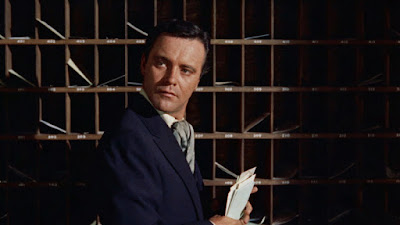 |
| Tim Winton |
I read Dirt Music on a long-haul flight. I couldn’t stop, didn’t sleep and held the book above my head as flight assistants delivered food and took away trays.
It’s Tim Winton at his most exhilarating. His evocation of time, place and characters seemed perfectly realized and the novel felt as quintessentially white Australian as an Arthur Streeton landscape.
Dirt Music won the Miles Franklin in 2002 and was short-listed for the Booker.
Phillip Noyce first picked up the film rights and at various times, Russell Crowe, Heath Ledger and Rachel Weisz were suggested for the lead roles.
Years passed and Noyce struggled:
“I could never get a script that I thought captured the poetry of the novel and there’s the problem. A poetic novel is just difficult to translate into a movie”.
He abandoned the project, but if ever an Australian novel needed the locally-informed attentions of the Phillip Noyce of Newsfront, Winton’s novel was it.
Many more years passed before a UK/Australian co-production was announced in 2017.
A seasoned local producer describes it as: “…an official co-production…developed by the UK producers…I would expect Australia is the minority”.
Let’s imagine for a moment that Ian McEwan’s Booker-shortlisted, quintessentially British novel Atonement is developed by Australian producers and launched as an Australian/UK co-production.
Seven of the 12 producers come from Australia and the British are minority partners.
Australian and American actors are cast as McEwan’s two Cambridge-educated Brits (replacing Keira Knightley and James McAvoy) and an Australian screenwriter adapts the novel.
What could possibly go wrong?
That’s pretty much the scenario for this UK/Australian co-production of Dirt Music.
A Scot and an American are cast as Aussie locals in Winton’s Western Australian fishing community; seven of the 12 producers are British; and the prolific British film and television writer Jack Thorne (Enola Holmes, The Secret Garden) has written the screenplay. Other key creatives are mostly British – except for direction, cinematography and costumes.
What could possibly go right?
Not much, as it turns out.
In 2017, Jason Clarke and Rachel Weisz were to head the cast, but by the time the film went into production in October 2018, neither Clarke nor Weisz were involved and nor were any Australian actors in the two leading roles.
How would the American Garrett Hedlund and the Scottish Kelly Macdonald manage with Winton’s broadly sketched Australian characters?
In the novel, Georgie Jutland is raised in Perth private schools and yacht clubs and has abandoned a nursing career. She now considers herself a fishwife, a “lobster moll” and is in a relationship with Jim Buckridge, a successful professional fisherman: “people with a million dollars’ worth of boat…a new Landcruiser and six weeks in Bali every season”.
The lapsed musician Lu Fox is brooding, solitary and broken by considerable family tragedy. He scratches out his living in the dark of night poaching fish and lobster from the likes of Jim Buckridge.
Georgie, in turn, decides to poach Lu.
Considering whom they are playing, Macdonald and Hedlund do quite well at flattening their accents, but that’s the best they can manage.
Up against the accents of real Australian actors such as David Wenham, Aaron Pederson and Dan Wyllie, they sound, to an Australia ear, wholly unconvincing.
Macdonald, well known in the UK for the television dramas Line of Duty and The Victim, has one very accomplished acting mode and it serves her well, but there’s little range beyond that.
"...American Garrett Hedlund and the Scottish Kelly MacDonald..."
Garrett Hedlund is hardly a marquee-draw in the USA and barely memorable in Netflix’s Triple Frontier and Mudbound. He’s certainly not a Ledger, a Crowe, or a Clarke and has seriously misjudged this role, completely failing to generate any of Lu Fox’s essential charisma.
It’s not the first-time screen adaptations of Winton have fallen short. If his characters share one trait, it’s their troubled interiors, their doubts, their guilts and their struggles to find shelter from their storms.
It takes real acting skills to carry this off and here, David Wenham is the only one who comes close.
It doesn’t help that much of the book is missing. Lu’s hitchhiking journey into The Kimberley in surfer wagons, road trains and caravans with crippled stoners, gruff rednecks and grey nomads is mostly not there.
In the novel, one of Lu’s great encounters on this journey is with Horrie and his wife Bessie, who is dying of bowel cancer and refusing any treatment. Horrie is driving her in his beat-up Nissen Patrol into the confounding immensity of The Kimberley so she can “sail off the edge of world” listening to Arvo Pärt: “it’s death music. Arvo in the arvo”.
It’s one of many sad, inexplicable omissions by the English scriptwriter Jack Thorne. Gone also are the nuances of Georgie’s family, particularly her sisters and one attempted suicide.
The lost material seems designed to cut the film down to a flattened love triangle and the textured feel of Winton’s interlocking stories has been abandoned. The result is bloodless, lacking all the intensity and soul of the novel.
Not so much unfilmable, as filmmakers floundering with a novel beyond their abilities.
Nothing symbolizes this better than the “dirt music” itself. Described as music “people play on their verandas”, Winton, with former ABC presenter Lucky Oceans, compiled two excellent CDs of “dirt music” (CD cover above) to complement the book. Yet the music we hear is such a pale imitation of what Winton intended, you’d be forgiven for cringing if you heard it piped into an elevator.
Alexandra Heller-Nicholas writing in Overland sums it up: “This is a book that, when adapted to film, had the very life sucked out of it with what felt like almost clinical determination”.
The only outstanding elements are Sam Chiplin’s cinematography and whoever was responsible for choosing the Esperance and Kimberley locations.
Major opportunity missed.
Poor Fellow My Country.
























